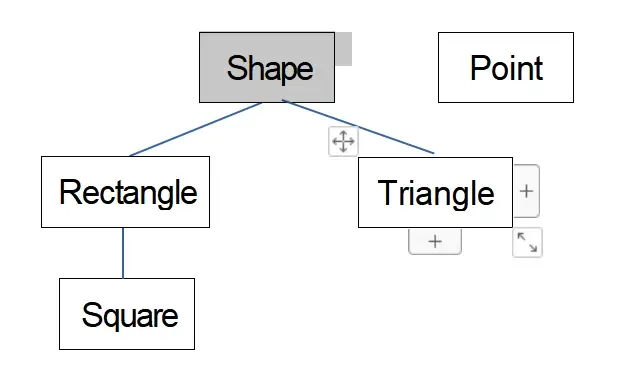加拿大瑞爾森大學 Python習題 Lab 7
Lab?7 –?CPS?106
?
?
This lab helps you get familiar with classes and inheritance.
1. ??Write?a?class?called?Shape.
class Shape:
2. ??The Shape class is?going to?represent?a?general?shape?in?the?2D?plane.?A?shape?is?described?by?a set of?points that determine its boundary. Write?a?class?called Point. The?point?class?has?two?attributes?x?and?y?which?are?unique?to?each?point.?So?we?define?them?as?instance?variables,?i.e., using the self?object. We initialize them in the __init__ mathod.
class Point(x,?y):
def __init__(self, x, y):
self.x?=?x
self.y?=?y
?
3. ??Write ?the?__str__?method?for?the?Point?class.?The?method ?should?return?a ?string?in?the?following format: “(x, y)”
?
4. ??Test the point class using the following:
p?=?Point(31,?7)
print(p)
?
5. ??Add?the?__init__?method?to?the?shape?class.?In?the?method?you?should?initialize?the?list?of?boundary points to empty:
self.boundary =?[]
?
6. ??Add a method called?set_boundary?to the?Shape?class.?The?set?boundary?method?accepts?a?list?of?points called boundary. In the method you should set self.boundary to the input boundary:
def set_boundary(boundary):
?
7. ??Write?the?__str__?method?for?Shape.?The?method?should?return?a?string?in?the?following?format:?“Boundary: (x1, y1), (x2, y2),?...” where the?set of?points?are?the?ones?in?self.boundary.?Hint1:?remember?that?the?point?class?gives?you?a?string?of the?form?“(x,?y)”,?so?you?can?use?that here. For?example?if self.boundary[0]?is?the point p?=?(5,?12)?then?str(p)?is?the?string?“(5,
12)”. Hint2: you should loop through all the points in self.boundary to get the final?result.
8. ??Define a class called Rectangle.?The?Rectangle?class?will?be?a?subclass?of?Shape:
class Rectangle(Shape):
pass
?
9. ??Test?the?rectangle?class?using?the?following.?The?first?point?is?assumed?to?be?the?bottom?left?corner of?the rectangle.
?
?
?
rect =?Rectangle()
rect.set_boundary([Point(0, 0), Point(0, 3), Point(5,?3),?Point(5,?0)])
print(rect)
?
10.?Define a class called Square. The Square?class will be?a?subclass?of?Rectangle:
class Square(Rectangle):
pass
?
Test?the?Square?class?using?the?following.?The?first?point?is?assumed?to?be?the?bottom?left?corner of?the square.
square =?Square()
square.set_boundary([Point(0, 0), Point(0, 3), Point(3,?3),?Point(3, 0)])
print(square)
?
11.?Define a class called Triangle. The Triangle class will be?a?subclass?of?Shape.?Test?the Triangle?class using the following:
trgle =?Triangle()
p(t)ri(rg)t(e)tgle(set_)oundary([Point(0, 7), Point(3, 3),?Point(2,?5)])
?
12.?The diagram of?the classes now looks like the following:
?

?
13.?Add the following method to the Square class:
def set_side_length(length):
?
The argument length is an integer, based on which the new boundary?point?of?the?square?will?be?calculated.?Since?the?first?point,?i.e.,?p?=?self.boundary[0],?is?the?bottom?left?corner,?the?point?above p, i.e.,?self.boundary[1], will be?(p.x,?p.y?+?length).?Figure?out?the?position?of the?rest of?the points. Test your code using the following:
square.set_side_length(5)
print(square)
代碼
7-1
7-2
7-13 class

